Battle laser complex Stryker MEHEL (USA)
The March 21 event in Washington hosted an event called the Booz Allen Hamilton Directed Energy Summit, the theme of which was the so-called promising projects. weapons directional energy. Along with other speakers, Colonel Dennis Will, who heads the G3 promising development program for the European contingent of the United States Army, spoke. He spoke about the most recent events and the new demonstration of one of the American combat lasers.
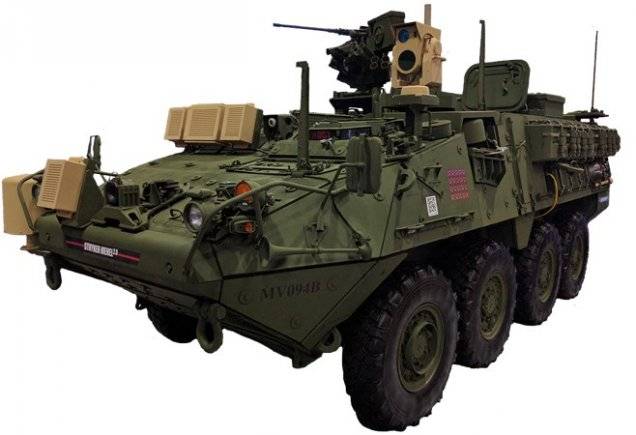
Battle laser complex Stryker MEHEL. Photo of US Army / army.mil
According to Colonel Will, last weekend (17 and 18 in March), the personnel of the 2-th armored cavalry regiment and the 7-th army training command and control team assisted by specialists from the Fort Sill test site (Oklahoma) arrived in Germany to demonstrate the latest American development. On the German grafenver training ground, demonstration firing took place with the participation of a promising combat vehicle Stryker MEHEL.
As part of this demonstration, a combat vehicle armed with a MEHEL 2.0 laser system was supposed to monitor the airspace and search for unmanned aerial vehicles. Then their defeat was carried out. Commercial vehicles were used as targets. Drones popular models that are widely used in various fields. Thus, the new laser complex was able to show its capabilities in an environment as close as possible to the real one.
Colonel D. Will stated that during the demonstration "firing" the combat laser shot down a dozen unmanned aerial vehicles that invaded his area of responsibility. In general, the past event can be considered successful.
However, it was not without some difficulties. As noted by the head of the G3 program, during combat training and test firing, you have to impose certain restrictions on the range and height. Without such restrictions, there is a risk of hitting civilian aircraft. A large number of airways pass over Germany, and therefore, in order to avoid accidents, the laser system should work only in limited areas.
D. Will also noted that the United States defense industry should continue to work on weapons systems using new operating principles. Thus, it is necessary to develop existing and promising laser complexes, as well as to work out other weapons of directed energy.
The latest at the moment demonstration of a promising laser complex of American design has again shown its capabilities and potential. Currently, the Stryker MEHEL system remains at the stage of various field tests, but in the near future it is planned to bring it to mass production and relatively mass exploitation in the army. Armored personnel carriers with a special laser installation will have to reinforce the existing military air defense, taking on the task of finding and destroying particularly complex targets.
The MEHEL project (Mobile Expeditionary High Energy Laser - “Mobile High-Energy Laser”) was launched several years ago in the interests of the ground forces. From the very beginning, the goal of the program was to create a compact but powerful laser system capable of striking various small-sized targets. With its help, it was supposed to protect the troops from small unmanned aerial vehicles, artillery shells and mines, small-caliber missiles, etc. Thus, the MEHEL complex had to fight against targets against which the existing air defense systems are powerless.
The MEHEL project is carried out by a number of American enterprises. For example, General Dynamics Land Systems is responsible for the supply and adaptation of self-propelled platforms for laser. Other organizations are also invited as subcontractors. For example, a fire control system developed by Boeing. A significant role in the project is played by various scientific and research structures of the armed forces.
The M1131 Fire Support Vehicle, supported by the US Army, became the carrier of the laser complex. In the initial configuration, she carried a rifle-caliber machine gun, as well as a large-caliber system or an automatic grenade launcher. To use a fundamentally new weapon, it was not necessary to abandon the existing barrel systems: the installation with a laser emitter is mounted on the roof of the hull, at a certain distance from the main combat module.
Various units of the MEHEL complex are mounted both inside the case of the base machine and on its surface. So, on the frontal part of the hull, at the starboard side, several rectangular covers with antenna devices are placed. A few more antennas with telescopic masts are located on the sides and in the stern, and one of them gets a characteristic cylindrical housing. Also, the structure of the outdoor equipment includes optical-electronic station and the actual combat laser. Detection and surveillance tools are proposed to be mounted in the Stryker stern, while the laser device is mounted directly behind the control compartment, on the roof of the hull.
The MEHEL combat laser on display at various events is not particularly complex. Directly on the roof of the car carrier with a special bracket, the U-shaped turntable is mounted. It is able to rotate around a vertical axis, providing horizontal guidance. Between the side posts of such a support is a swinging unit with a laser. The unit received a simple rectangular case with a rounded bottom. On the front wall of the case there is a pair of lenses. Above them is a small visor.
Inside the body of the armored vehicle mounted controls and other equipment. Control over the operation of the laser and other systems is carried out using a remote control. Electricity is taken from regular sources of the carrier platform. All stages of preparation for combat work and subsequent "shooting" are carried out using remote control tools; it is not necessary to leave the car.
Together with other equipment, the complex includes certain automation tools. Provides for the possibility of automatic tracking of a moving target, primarily necessary for its accurate destruction. An automated search for air targets is also possible, in which all the main work is carried out by electronics, and the load on the gunner operator is sharply reduced.
As a means of search and guidance using its own radar and an optical-electronic system. They provide monitoring of the air situation at any time of the day and regardless of the weather. According to data from these funds, laser guidance and tracking or hitting the target is performed. Communication tools provide target designation from third-party sources. The obtained target data is immediately transmitted to the fire control system.
The combat laser is complemented by radio-electronic means, which are also capable of, at least, interfering with the operation of unmanned aerial vehicles. The machine Stryker MEHEL carries an electronic warfare system designed to suppress communication channels. Muting the connection of the UAV with the operator’s console, the laser complex facilitates further work and simplifies the defeat of the target.
The first information about the assembly of an experienced Stryker MEHEL combat vehicle and its testing at the test site appeared at the beginning of 2016. Then official sources at the Pentagon reported that a new type of laser, designed to hit various air targets, develops power in 2kW. This was enough to solve some problems, but in the course of the further development of the project it was planned to increase the capacity several times.
A few months later, the prototype received new equipment built according to the MEHEL 2.0 project. The updated laser complex outwardly differed little from the product of the first version, but it had to show higher performance. Emitter power has been increased from 2 to 5 kW. In addition, the developers have indicated that they do not intend to dwell on this. Last spring, it was announced that in 2018, the laser power would be increased to 18 kW with a corresponding increase in combat effectiveness.
About a year ago, the second version of the laser complex went to the Fort Sill test site to demonstrate its capabilities and develop basic technologies. Helicopterless unmanned aerial vehicles similar to those present in the mass market were used as training targets during such tests. Despite the fact that the power of the MEHEL laser at that time was far from desired, already during the first test the complex managed to inflict the most serious damage to the target and make it fall. Subsequently, several other UAVs fell victim to the new air defense system.
Tests of the Stryker MEHEL prototype - first of all, its new combat equipment - are still ongoing. Just a few days ago, this sample was sent to Germany for demonstration at a foreign test site. Now, probably, Stryker will be returned home to the United States, where the tests will continue. It is possible that in the near future there will be regular field demonstrations and trials.
Landfill "firing" from a combat laser, while not developing the estimated power, continues from the 2016 year, and during this time very remarkable results were obtained. Each fact of the defeat of the target drone is fixed with a sticker on the armor of the vehicle. Until recent checks in Germany, 64 evidence of successful interceptions was present aboard the Stryker MEHEL. Most targets were hit in 2017. Basically, the car "shot" on a helicopter-type UAV. The number of small remote-controlled aircraft was several times smaller.
Probably in the future on the prototype may appear new stickers with other drawings. In the near future, the authors of the project plan to increase the power of the MEHEL 2.0 laser to the calculated 18 kW, which will significantly increase the combat effectiveness of the system. The increase in radiation power will accelerate the heating of the target and reduce the time required for its destruction. It is assumed that such an improvement of the laser will allow to solve new problems and significantly expand the range of targets to be hit.
So far, the combat laser was tested only on light compact UAVs, built primarily of plastics and composites, as well as those not distinguished by high flight speeds. However, according to the plans of the customer, the Stryker MEHEL system in the future will have to fight with larger aircraft, unguided rockets and artillery shells. To hit such targets requires the transfer of more energy over an increased distance. In addition, their flight data dramatically reduce the allowable reaction time.
In case of successful solution of such tasks, new combat vehicles with special electronic and laser equipment can go into series and enter service. The Stryker MEHEL complex is considered as a new means of air defense for troops on the march and in bases, complementing other complexes. Thus, the “traditional” air defense objectives will be taken over by the already existing systems, and the combat laser will fight the new threats. It is assumed that the first to receive the latest technology base, exposed to the greatest risks.
The Pentagon has already managed to draw up approximate plans for the future deployment and use of new technology, but the project is still far from complete. At the moment, the prototype model of the Stryker MEHEL is being tested at different test sites, but is still not ready to work "in full force." The current power of the laser emitter is more than three times less than the calculated one, and to achieve the latter, new work, spending and, naturally, additional time are required.
However, the authors of the project look into the future with optimism. According to various estimates, development work can be completed by the beginning of the next decade. After that, having received the order, the industry will have to develop the production of new equipment. Will it be possible to release it in large quantities - is unknown. However, in a few years, manufacturers will be able to supply all the parts that need them with the required machines.
According to current plans, this year the power of the MEHEL 2.0 combat laser should reach the calculated 18 kW. This means that no more than a few months remained until the first tests of the improved system. Whether we will be able to complete the work within the prescribed period and get the desired results - we will find out in the near future
On the materials of the sites:
https://army.mil/
https://defensenews.com/
http://armyrecognition.com/
https://breakingdefense.com/
http://janes.com/
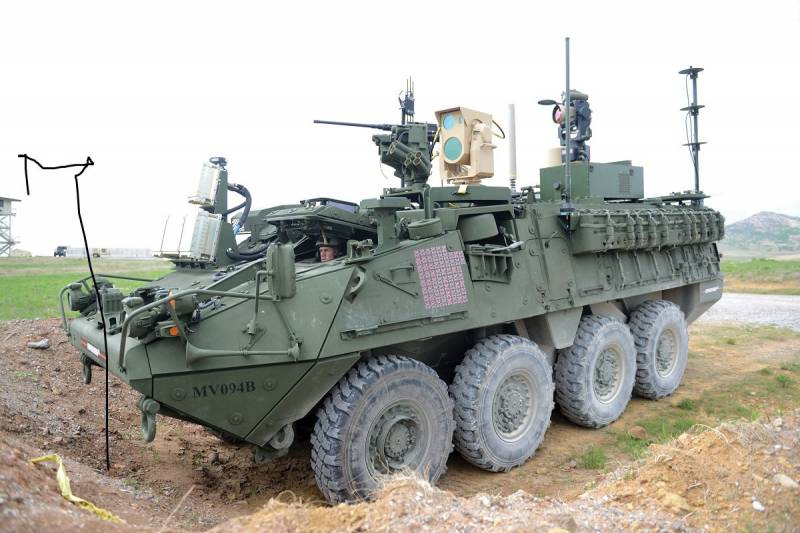
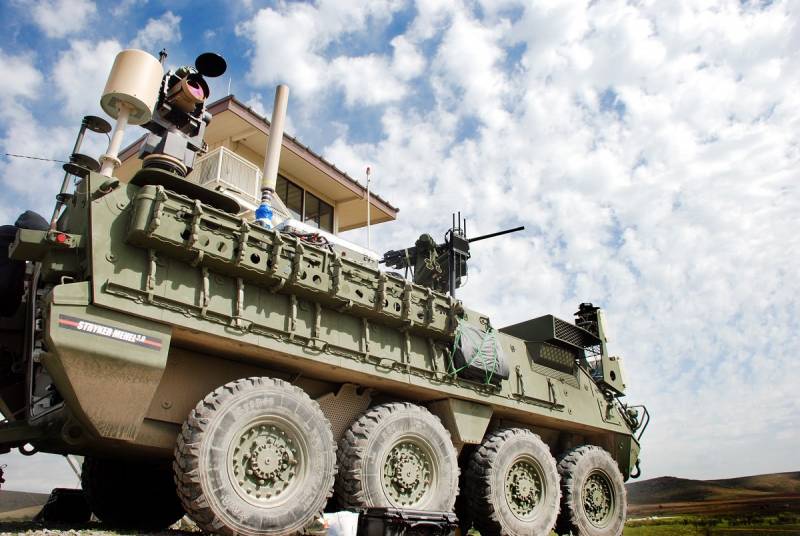

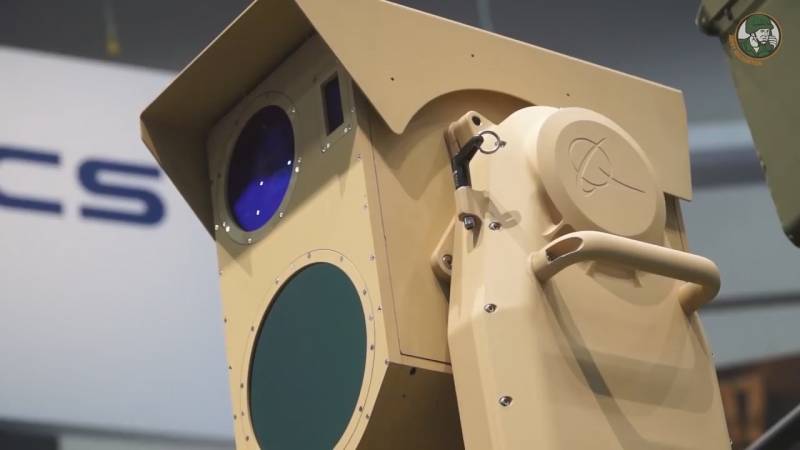
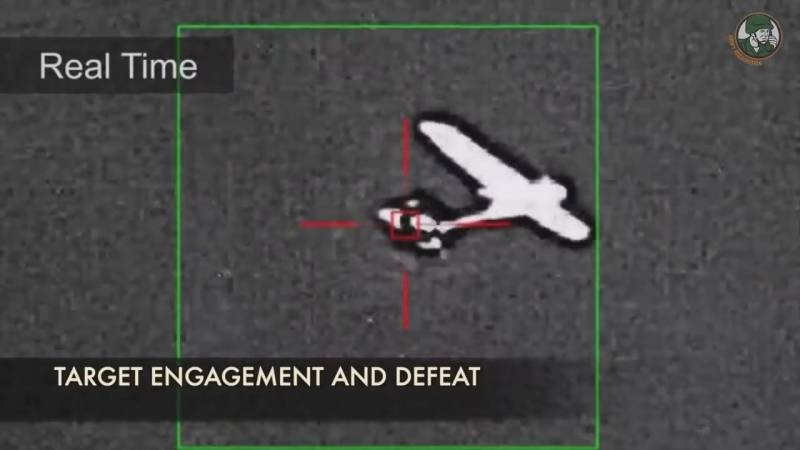
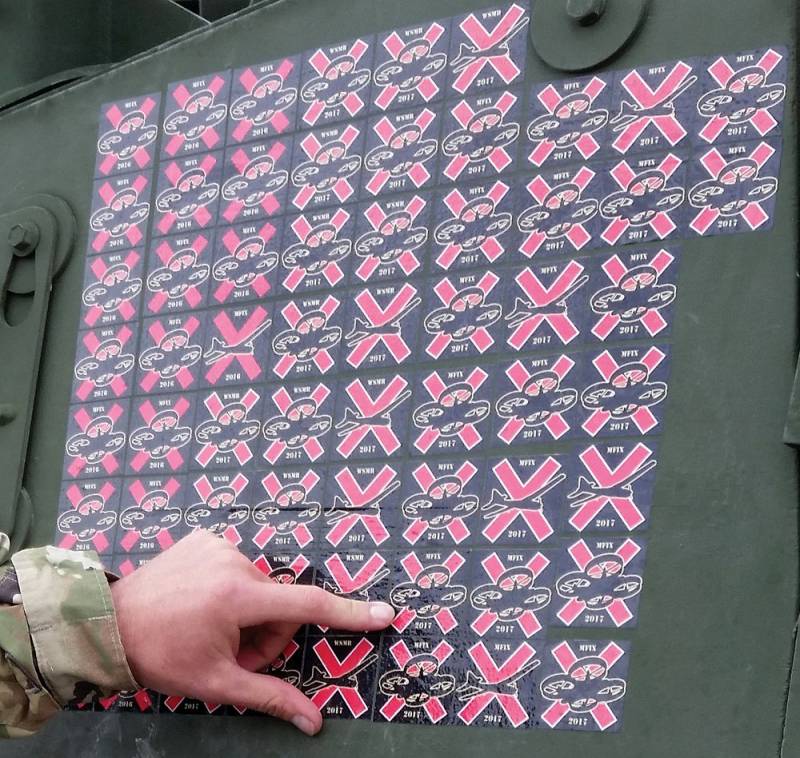
Information